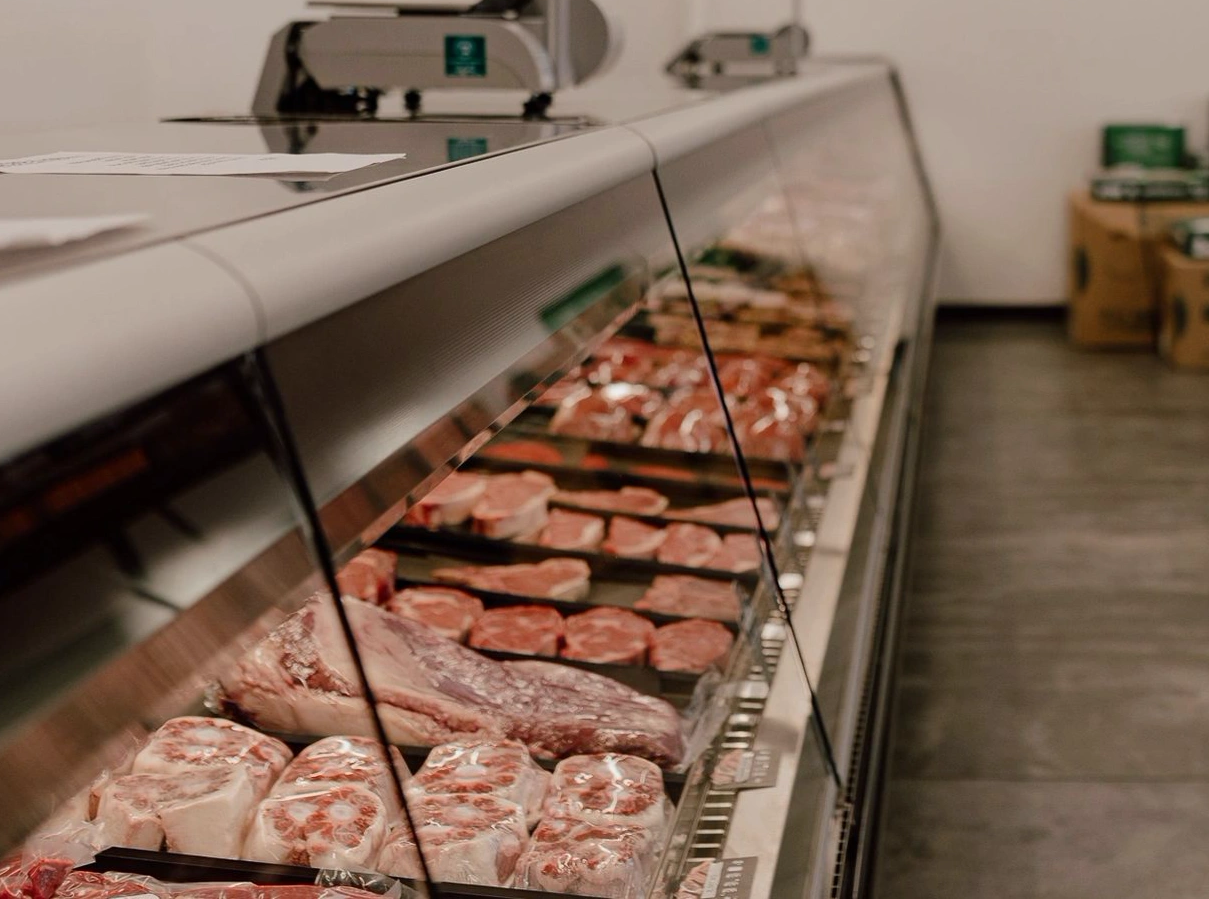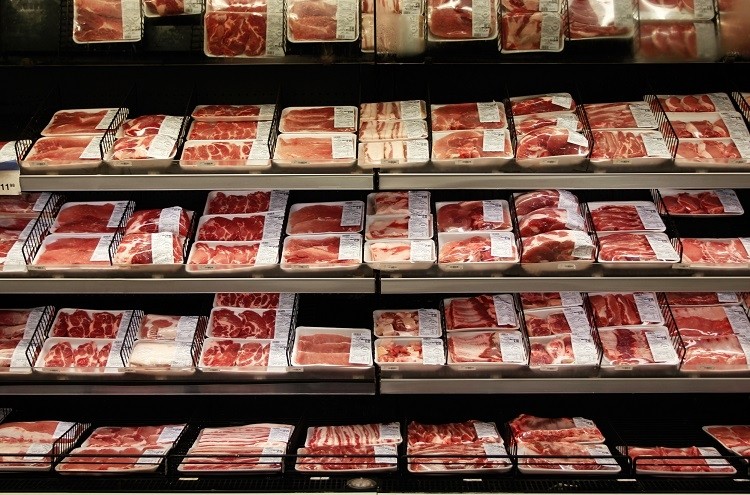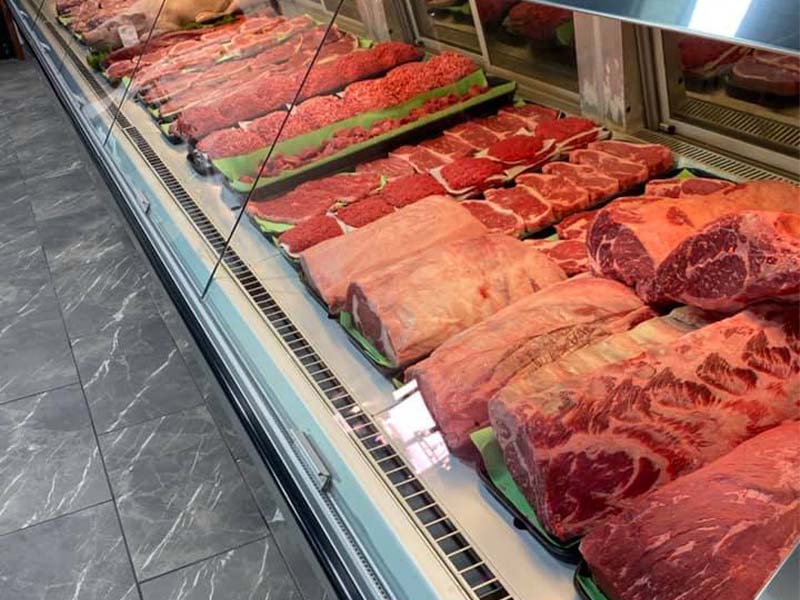Bagley Farms Meat Market Edwardsville IL: Your Trusted Source for High-Quality Meats
Bagley Farms Meat Market Edwardsville IL: Your Trusted Source for High-Quality Meats
Blog Article
Reveal the Art of the Butcher's Cut in a Modern Meat Market
In the ever-evolving landscape of modern-day meat markets, the butcher's cut has transcended its standard roots, merging age-old workmanship with modern methods. bagley farms meat market edwardsville il. Today's butchers are not merely cpus of meat; they are educated craftsmens who emphasize sustainability and ethical sourcing. Their knowledge in selecting and preparing cuts customized to certain culinary needs supplies an unrivaled dining experience. What really sets the modern-day butcher apart is their ability to build a much deeper connection in between consumers and the beginnings of their meat. Just how do these masters balance practice with technology, and what ramifications does this have for the future of meat consumption?
Development of Butchery Techniques

The mid-20th century saw butchery techniques further refined by scientific insights into muscle biology and meat aging, enhancing both tenderness and taste. Technologies like vacuum cleaner product packaging and refrigeration prolonged item shelf-life, allowing butchers to diversify offerings and enhance quality assurance. This period additionally marked the increase of customized tools, such as band saws and meat slicers, which increased accuracy and performance in meat handling.
The 21st century has actually presented electronic modern technology into the butchery realm. Electronic systems now assist in tracking pet provenance and optimizing cuts to fulfill certain customer choices. In addition, a rebirth in artisanal butchery has emerged, mixing conventional skills with modern-day understanding to cater to customers seeking honest and sustainable meat options. This advancement highlights a dynamic interaction between tradition and innovation, meeting contemporary needs while maintaining the craft's heritage.

Recognizing Meat Cuts

Understanding the ins and outs of meat cuts is important for both butchers and customers looking for quality and worth. For butchers, precise cuts show ability and respect for the craft, ensuring marginal waste and ideal yield.
The primary groups of meat cuts consist of primal, sub-primal, and retail cuts. Butchers after that damage these down better into sub-primal cuts, before finally creating retail cuts available to consumers, like ribeye or tenderloin.
Comprehending muscle mass composition is crucial; muscle mass used more often by the pet have a tendency to be harder and are best suited for slow cooking methods, while less-used muscles, like those located in the loin, are much more tender and perfect for barbecuing or roasting. Knowledge with these distinctions equips customers to make informed choices, improving their cooking endeavors.
Selecting Quality Meat
Picking the ideal meat includes more than just picking a visually enticing item from the screen. The art of selecting top quality meat calls for a critical eye and understanding of particular attributes that signify freshness and excellence.
Secondly, take into consideration the marbling, which refers to the white flecks of fat within the muscular tissue. Appropriate marbling is a key indication of tenderness and taste, as it thaws during food preparation, improving the meat's juiciness. Remember, greater marbling frequently associates with superior quality cuts, such as USDA Prime.
Appearance is another essential aspect; meat should really feel firm to the touch, not slimed or overly soft. In addition, bear in mind the aroma. Fresh meat ought to have a tidy, neutral smell, without any sour or repulsive odors.
Combining Cuts With Cooking Techniques
Effectively coupling cuts of meat with the ideal cooking methods is necessary for achieving optimal flavor and texture. These methods enhance the meat's natural flavors and make certain a juicy finish.
Alternatively, harder cuts like brisket and chuck roast are rich in collagen, which breaks down into jelly when cooked gradually. These cuts see here now are suitable for braising or slow roasting, allowing the meat to tenderize in time and establish deep, complicated flavors. Likewise, cuts such as short ribs and pork shoulder get on well with slow-cooking techniques, where extended cooking times transform their robust textures right into delicious meals.
Lamb shanks and oxtail, which call for long term food preparation to tenderize, are ideal candidates for cooking or slow-moving simmering. These techniques coax out rich, hearty tastes while preserving moisture. By understanding the one-of-a-kind features of each cut, cooks and home cooks alike can elevate their cooking developments, guaranteeing each dish is both pleasing and unforgettable.
The Butcher's Role Today
Navigating the advancing landscape of the modern-day meat market, the butcher's function today extends past simple preparation of cuts. Contemporary butchers are cooking artisans, instructors, and advocates for sustainable methods. They bridge the void between the ranch and the fork by making sure ethical sourcing, recognizing animal husbandry, and focusing on openness in the supply chain. This change shows the growing consumer demand for high quality over quantity, where provenance and pet welfare are vital.
In enhancement to crafting exact cuts, butchers now involve straight with clients, supplying cooking recommendations and customizing choices to match private demands and preferences. Their proficiency additional reading in meat aging, marbling, and taste accounts empowers customers to make enlightened decisions, improving their cooking experiences. This individualized solution exhibits the butcher's developing duty as a trusted consultant in the cooking area.
Moreover, butchers are critical in decreasing waste, utilizing whole animals to develop varied products such as sausages and stocks - bagley farms meat market edwardsville il. This thorough approach not just values the animal but likewise aligns with modern sustainability objectives. In this means, the modern-day butcher personifies both tradition and advancement, adjusting to an ever-changing market while protecting the artistry and integrity of Web Site their craft

Conclusion
The contemporary butcher's craft intricately weaves typical strategies with contemporary developments, emphasizing lasting methods and ethical sourcing. Proficiency in comprehending diverse meat cuts and top quality indicators encourages butchers to supply informed referrals, lining up specific cuts with optimum cooking approaches. This competence not only boosts culinary experiences yet likewise reinforces the connection in between consumers and the beginnings of their food. By honoring historic practices while welcoming contemporary needs, the butcher's role stays vital in today's advanced meat market.
Report this page